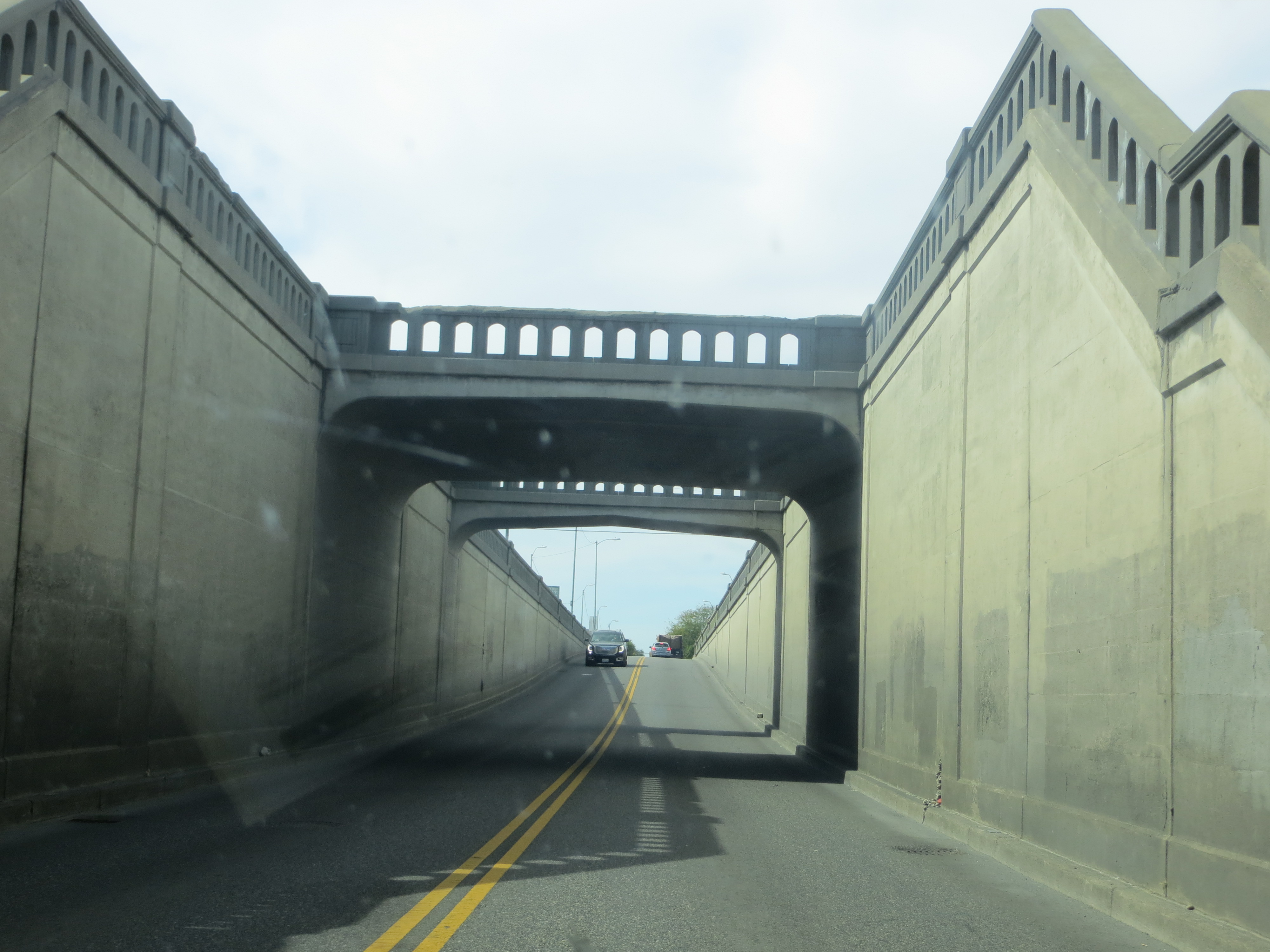|
|
||||
| Region: Southeast | Legislative District: 16 | Length: 0.41 mi. | FY 2021 Urban Arterial Program (UAP) |
 |
Existing ConditionsConstructed in 1937 with few modifications or modernizations, Pasco's Lewis Street passes under one of the busiest R1 railroad yards in the Pacific Northwest through a structurally impaired and functionally obsolete undercrossing which does not meet current safety or design standards. The undercrossing is narrow and the vertical clearance is 9" lower than state standards. Modern freight vehicles are unable to use the underpass because of these restrictions, forcing drivers to utilize at-grade crossings. Since Lewis Street is the primary freight route for the CBD, the underpass restricts the efficient movement of goods to the downtown businesses. Lewis Street is a vital east-west connection for Pasco and has no ADA facilities or bicycle access. The concrete in the stairwells is deteriorating and there is poor illumination throughout the tunnel. This route is one of only two emergency vehicle grade-separated crossings in the urban area and the most utilized direct route to the local hospital. The structure has no shoulders or emergency pull-outs. |
Project Funding
| TIB Funds | Local Funds | Total Costs | |
|---|---|---|---|
| Design | 0 | 1,800,000 | 1,800,000 |
| Right of Way | 0 | 0 | 0 |
| Construction | 5,000,000 | 20,418,960 | 25,418,960 |
| Project Totals | $5,000,000 | $22,218,960 | $27,218,960 |
Local Match
| TIB Participation | Local Match | Minimum Local Match |
|---|---|---|
| 18.4% | 81.6% | 20% |
Summary of Improvements
- Improves safety;
- Improves mobility;
- Opens corridor to truck volumes
Description of Improvements
The Lewis Street Overpass has been developed to address the community's need for a safe, efficient and appropriately sized east-west connection across the BNSF railyard. The design includes ADA compliant pedestrian sidewalks and mult-modal paths, bike lanes, and travel lanes while being sensitive to the downtown district on the west and an industrial area on the east. The cross section for the overpass has been carefully considered in order to provide facilities which will accommodate transit, freight trucks and auto movements while providing a reliable, efficient and safe route to connect the community with vital services.